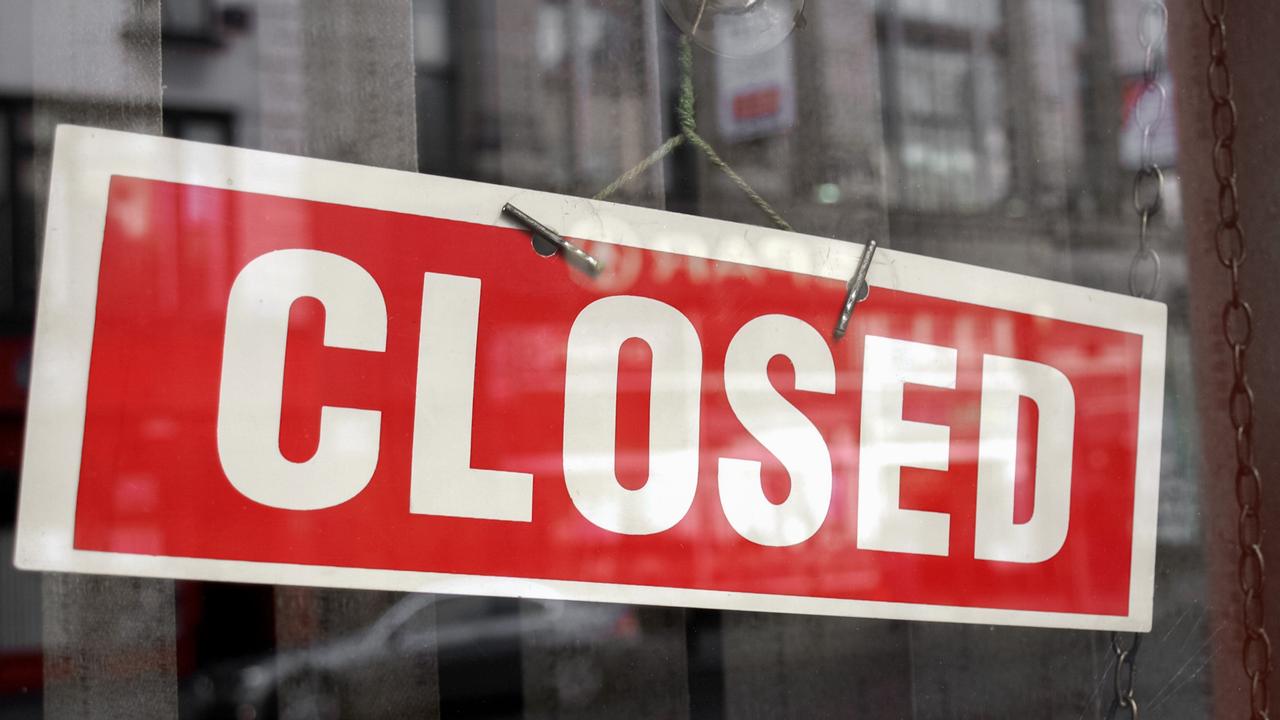Insolvencies grow as businesses bear the brunt of an economic ‘perfect storm’
and the lost goes on ...stock mkt is not the real economy
By CHRIS HERDE
BUSINESS REPORTERand GLEN NORRIS
SENIOR BUSINESS REPORTER- UPDATED 4:32PM APRIL 1, 2024, FIRST PUBLISHED AT 4:01PM APRIL 1, 2024
- 2 COMMENTS
The Australian economy is in the middle of a “perfect storm” with insolvencies rising to an almost decade high last month as businesses struggle with crushing debt and a shortage of cash.
Australian Securities and Investments Commission figures show there have been 2566 insolvency appointments so far this calendar year to March 31, compared with 1881 during the same period in 2023.
Revive Financial head of business restructuring and insolvency Jarvis Archer said insolvencies were tracking about 36 per cent higher in the 2024 financial year compared with 2022-23. They were averaging about 826 a month – up from 660 per month last year.
“They just seem to keep going up. We’re in a perfect storm for higher levels of insolvency over the coming year,” Mr Archer said.
“During the pandemic, insolvencies dropped to about half. So there were around 7000 less company insolvencies over the 2021 and 2022 financial years. We returned to normal levels in 2023, and this financial year we’re seeing the beginning of the clean-up.”
He said that over the past year, poor economic conditions had caused substantial trading losses, depleting cash and working capital to unsustainable levels.
READ MORE: One fifth of SMEs ‘placed at risk of insolvency’ | Crippling debt: Insolvency ‘tsunami’ worst since GFC | Insolvency appointments coming ‘thick and fast’ |“Costs are up and sales are down due to inflation and lower consumer spending,” Mr Archer said. He said it was going to be “really difficult” for many businesses to get through the next six to 12 months, particularly if the Australian Taxation Office ramped up debt collection.
Mr Archer said preliminary numbers indicated more than 1040 companies entered external administration in March, which was the highest number since September 2015.
He said that for the first time, small business restructuring (SBR) appointments had exceeded voluntary administration and court liquidation appointments.
“This demonstrates the increase in small businesses looking to proactively deal with their ATO and other debts for the survival of their business,” he said.
The SBR process, introduced in 2021 to help businesses with less than $1m in debt recover from the pandemic, has proved highly successful. It has a greater than 92 per cent success rate and an average debt write-off of about 80 per cent.
Construction continued to be the biggest casualty of the current insolvency wave with a stream of major national companies calling in administrators.
Building giant St Hilliers, which does work for the Department of Defence, went into voluntary administration in February leaving 21 jobs in limbo and initially owing $13m while national fit-out and refurbishment business Rork Projects collapsed owing about $30m.
Last week Queensland civil construction specialist Allroads was placed in liquidation leaving a string of roads and defence projects with an uncertain future.
Retailers have also been hit; 93-year-old vacuum cleaner seller Godfreys sought a buyer after being forced into voluntary administration.
Mr Archer said the impact of the pandemic and challenging trading conditions caused many businesses to stop paying their taxes.
“This is now a real issue. In 2020, small business owed the ATO about $12bn That number has nearly tripled to $34.1bn,” he said.
“In an effort to get the debt down, the ATO is throwing everything at it, including the recent rollout of garnishee notices which I haven’t seen since 2018.”
The hospitality and retail sectors have been hit as a result of lower consumer spending. Combined, the construction, hospitality and retail sectors account for about 50 per cent of all insolvencies in Australia.
While construction sector insolvencies were increasing, they were below the overall average and company numbers were 32 per cent higher than the same time in the 2023 financial year.
Retail and hospitality were suffering the most; both had a 49 per cent increase in businesses collapsing because of thinning margins caused by lower consumer spending and confidence, against a backdrop of higher costs.
McGrathNicol chairman Jason Preston said although insolvencies were occurring across all sectors, the businesses hurting the most were those having to cope with inflation impacting on input prices which could not easily be passed onto the end customer.
“In particular, they have a large component of labour cost and hence are impacted by increasing wage levels. As a result, businesses in these sectors often face a profit squeeze, and can quickly become loss making,” he said.
“Retail, accommodation and food services are particularly exposed to a downturn in consumer spending.”
Mr Preston said energy transition was also having an effect in certain areas.
“Certain renewables projects have found conditions difficult for a range of reasons, including curtailment on completed projects and challenges completing construction on other projects due to labour and supply chain issues,” he said.
“Meanwhile, businesses that have a high proportion of energy cost are also being particularly impacted by the significant increase in energy costs over recent years.
“With the increase in interest rates and some volatility in certain commodity prices, we have seen a number of mining operations mothballed or go through an insolvency process over the last 12 months as well.”
Mr Preston said he did not expect any of the macroeconomic factors causing the elevated insolvency numbers to change significantly in 2024 and current levels were likely to continue for most of the year.
“Insolvency rates may moderate back at the long-term average over the course of next year,” he said.
“For this to occur, inflation would need to come back to target levels of 2 per cent to 3 per cent at the back end of this year without further interest rate rises and the geopolitical environment would need to stabilise.”
Major company failures so far in 2024
St Hilliers
CMG Homes
Rork Projects (Holdings),
GDK Group of companies
Godfreys Group
Allroads
Cubitt’s Granny Flats and Home Extensions
Project Coordination (Australia)
Main Facilities
Australian Floor Group
- Forums
- ASX - By Stock
- XJO
- Indices 01/04
Indices 01/04, page-25
-
-
- There are more pages in this discussion • 77 more messages in this thread...
You’re viewing a single post only. To view the entire thread just sign in or Join Now (FREE)
Featured News
Add XJO (ASX) to my watchlist
 (20min delay) (20min delay)
|
|||||
|
Last
7,963.3 |
Change
12.800(0.16%) |
Mkt cap ! n/a | |||
| Open | High | Low |
| 7,950.5 | 7,991.8 | 7,950.5 |
Featured News
| XJO (ASX) Chart |
 According to ASIC there have been 2566 company collapses this year to March 31.
According to ASIC there have been 2566 company collapses this year to March 31. Revive Financial head of business restructuring and insolvency Jarvis Archer.
Revive Financial head of business restructuring and insolvency Jarvis Archer. McGrathNicol chairman Jason Preston at his Sydney office.
McGrathNicol chairman Jason Preston at his Sydney office.



